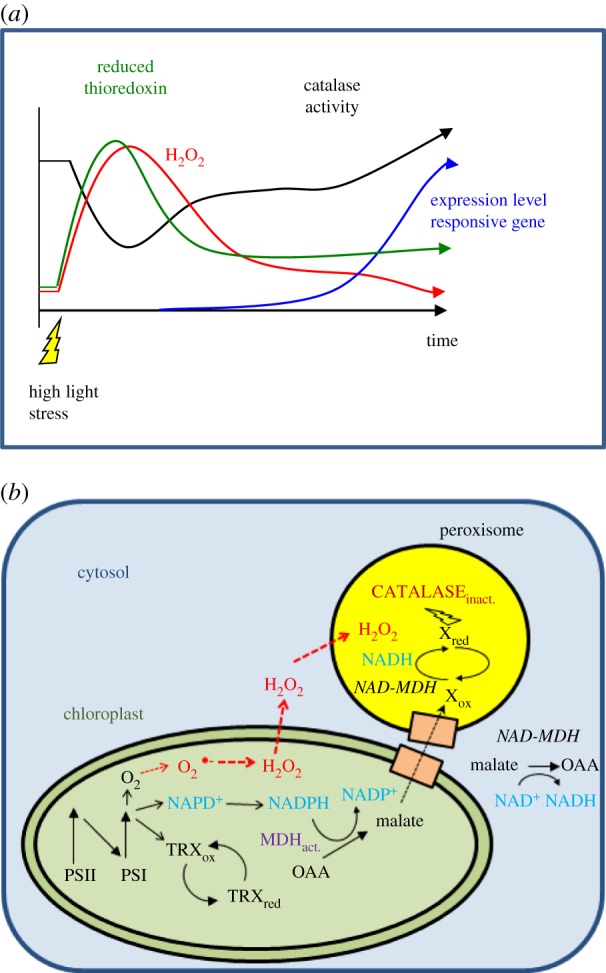Figure 1.

(a) Scheme describing signalling by a H2O2 pulse according to our hypothesis. When a plant is suddenly exposed to a change in the light intensity from low to high light, the pool of NADP+ in the chloroplast becomes quickly reduced. In parallel, the reduction state of the thioredoxin pool increases and O2 acts as final electron acceptor leading to the generation of O2.− and H2O2. H2O2 is partially detoxified in the chloroplast and partially diffuses into the cytosol and other cell compartments leading to an increase in the overall intracellular H2O2 concentration. Because the activity of catalase is partially inhibited by reducing equivalents originating from the chloroplast (see (b) for further explanation), the H2O2 concentration reaches its maximum. After a given time, the photosynthetic electron transfer chain is downregulated by different mechanisms, such as photosynthetic control, non-photochemical quenching and changes in the cellular metabolism. These phenomena increase the availability of NADP+ and as the reduction pressure in the chloroplast declines, TRX get more oxidized and the catalase is re-activated and decreases the intracellular H2O2 concentration. According to our hypothesis, this H2O2 burst is sufficient to induce the expression of H2O2-responsive nuclear genes. (b) Reactions occurring in the chloroplast and peroxisomes leading to a reversible inactivation of the catalase activity via the malate valve. At the acceptor side of photosystem I, NADP+, TRXs and O2 are reduced. Reduced TRXs activate the NADP-dependent malate dehydrogenase (MDH indicated in purple in the chloroplast). NADPH is oxidized and oxalacetate is reduced to malate by NADP–MDH. Malate is exported from the chloroplast via dicarboxylate transporters (orange boxes). NAD-dependent MDH isoforms present in the cytosol and in the peroxisomes convert malate into oxaloacetate and reduce NAD+ to NADH. NADH in the peroxisomes reduces a compound called X in the scheme that inactivates the catalase activity partially and reversibly by a still unknown reduction mechanism. H2O2 is generated in the chloroplasts and diffuses into the cytosol and other cell compartments. (Online version in colour.)
